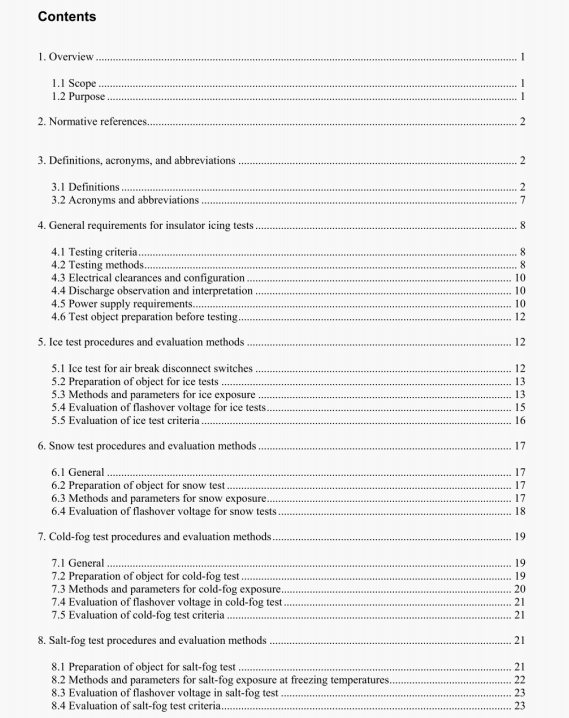IEEE 1783:2009 pdf free donwnload.IEEE Guide for Test Methods and Procedures to Evaluate the Electrical Performance of lnsulators in Freezing Conditions.
insulator: An insulating material designed to support a conductor physically and to electrically separate it from anothcr conductor or object.
leakage current: A component of the measured current that flows along the surface of the tool or equipment, due to the properties of the tool or equipment surface, including any surface deposit, when the device is connected as intended to the energized power system at rated voltage.
leakage distance: The shortest distance, or the sum of the shortest distances, along the insulating parts of the insulator between those parts that normally have the operating voltage between them.
NOTE I —The surface of cement or of any other noninsulating jointing material is not considered as fonning part of the creepage distance.
NOTE 2 If a high-resistance coating. e.g.. semi-conductive glaze. is applied to parts of the insulating part of an insulator, such parts arc considered to be effective insulating surfaces and the distance over them is included in the leakage distance.
NOTE 3—Leakage distance is synonymous with creepage distance in IIU 60X15-l:200X l44l.
lightning impulse: An impulse with front duration of up to 20 p.is.
liquid water content (LWC): The mass of water per unit volume of air, typically expressed in g/m for natural and artificial fog and mist.
melted water conductisity: The electrical conductivity of water used to simulate ice, snow, or cold fog accretion on insulators, melted after accretion and corrected to 20 °C. The melted water conductivity can be higher than the applied water conductivity when accretion occurs on contaminated insulator surfaces. Melted water conductivity can also be lower than applied water conductivity fir glaze ice accretion on clean insulators, through the process of water purification by crystallization.
minimum flashos-er voltage: The crest value of the lowest voltage impulse of a given wave shape and polarity that causes flashover.
monitoring cylinder: A cylinder for measuring reference ice accretion, typically 25 mm to 30 mm in diameter, either rotating at I rpm or fixed.
nondisruptis’e discharge (partial discharge): A discharge between intermediate electrodes or conductors in which the voltage across the terminal electrodes is not reduced to practically zero.
nonsoluble deposit density (NSDD): The amount of the nonsoluble residue removed from a given surface of the insulator divided by the area of this surface, generally expressed in mg.cm2.
nonstisfained disruptive discharge: A momentary disruptive discharge.
NOTE —A nonsustained disruptive discharge spans the dry arc distance by an arc or spark, but in doing so drops the test voltage to such an cstcnt that the arc goes out.
overshoot: The maximum amount by which the step response exceeds the top line, specified as a percentage of (recorded) pulse amplitude.
IEEE 1783:2009 pdf free donwnload
